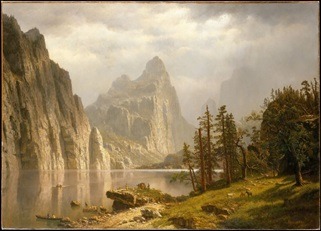Albert Bierstadt was a German-American painter famous for his grand and detailed paintings of the American West. Bierstadt’s paintings of the American West helped to shape the way that Americans viewed their country. However, his life was not without tragedy, which had a profound effect on his art.
In this blog post, we will explore the art and tragedy of Albert Bierstadt, delving into his life, career, and the impact of personal tragedy on his artistic vision. We will examine how his experiences with mental illness and loss influenced his art. Ultimately, we will see how Bierstadt’s life and art remind us of the power of tragedy to shape and inspire great works of art.
His Wife’s Illness and Death
One of the most significant tragedies in Albert Bierstadt’s life was his wife Rosalie’s health issue. Rosalie suffered from tuberculosis, which became a source of great concern for Bierstadt. He devoted a significant amount of time and effort to caring for his wife while she was battling tuberculosis. Unfortunately, Rosalie succumbed to the illness and took her last breath on 1 March 1893.
Since Rosalie had to stay away from New York’s cold weather, she spent most of the time of her illness at the Royal Victoria Hotel, in Nassau, Bahamas. Albert Bierstadt would often visit her by taking a steamer from New York. The Royal Victoria was a Sanatorium for rich Americans who could afford lengthy healthcare in the Bahamas.
It was during this time Albert Bierstadt painted a beautiful piece titled “View of Nassau.” The painting depicts a panoramic view of Nassau, the capital city of the Bahamas, and captures the beauty of the tropical island with its lush greenery, clear blue waters, and picturesque architecture.
The Fire Accident
Known for his grand, panoramic landscapes of the American West, Albert Bierstadt had his studio located in New York City, which contained a list of Albert Bierstadt’s most famous paintings and sketches, as well as his personal belongings.
In 1882, a fire broke out in Albert’s neighboring building which rapidly spread out into his studio as well, causing extensive damage in the studio. Many of his paintings were destroyed or damaged beyond repair, including several large-scale works that he had been working on at the time.
Despite the setback, Bierstadt continued to produce art and remained a prominent figure in the American art world. He went on to create some of his most famous works in the years following the fire, including “The Last of the Buffalo” and “Mount Hood, Oregon.”
An Unavoidable Dark Cloud in the Career
Besides the tragedies of his personal life, an unavoidable dark cloud was soon making its way into Bierstadt’s life. The 1860s were probably the golden period of Bierstadt’s career- his paintings were highly sought by wealthy art collectors and even reputed museums and exhibitors throughout the world.
At the peak of his career, Bierstadt was getting as much as $20,000 for his large-size paintings. However, Bierstadt felt that the critics were wrong not to appreciate his art style, which captured the majestic beauty of the American West.
Many of the critics of his time did not appreciate Bierstadt’s style, which they felt was too theatrical and exaggerated. They accused him of creating artificial, overly dramatic landscapes that did not accurately represent the American West. Because of such criticism, soon after Bierstadt’s wife was diagnosed with TB, his paintings fell out of favor with the collectors and critics.
Art Style and Paintings
Heavily influenced by the Hudson River School, Bierstadt was known for his highly detailed and realistic landscape paintings. He was a master of capturing light and atmosphere, and his paintings often featured glowing sunbeams, sparkling water, and moody cloud formations, which were absolutely surreal and breathtaking.
His paintings mostly featured majestic mountains, pristine lakes, and dramatic sunsets. Characterized by their grandeur and scale, Bierstadt often included tiny figures such as explorers, Native Americans, and wildlife to emphasize the vastness of the landscapes he was painting.
Albert Bierstadt has painted some of the most famous paintings of all time. This list includes masterpieces like, “Among the Sierra Nevada Mountains, California” (1868)”, “The Rocky Mountains, Lander’s Peak” (1863)”, “Sunset in the Yosemite Valley” (1868)”, and “The Last of the Buffalo” (1888)”, among others.
The Legacy of Albert Bierstadt
Despite all the tragedies in his life, Albert Bierstadt continued to paint till his last breath on 18 February 1902. Today, the artist is remembered as one of the most important American painters of the 19th century, and his paintings are some of the most famous ones throughout art history.
Bierstadt’s paintings are known for their grandeur, drama, and attention to detail. He often used sweeping vistas and dramatic lighting effects to create a sense of awe and wonder in his viewers. In addition, his depictions of the American West helped to shape the nation’s identity and foster a sense of national pride and awe in the natural world.

